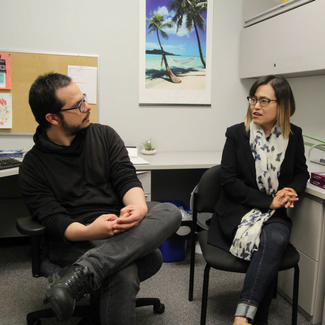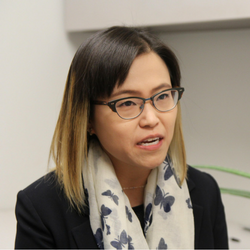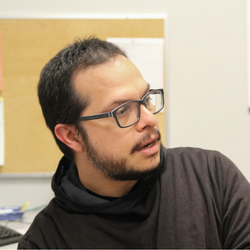
UBC PhD candidates Claire Ahn and Ernesto Peña share their views on the importance of being equipped with the skills to decipher fake or manipulated visuals and graphics.
Claire Ahn and Ernesto Peña have been conducting research in the Department of Language and Literacy for many years. Their 2017 Summer Institute, Critical Visual Literacy, aims to provide a hands-on workshop that will allow participants to develop skills in visual technologies, such as Adobe Photoshop, and how to incorporate visual literacy skills into the classroom.
Claire, who taught high school English in Alberta for ten years before pursuing her postgraduate work, is excited about the opportunity to engage other teachers in visual literacy and discuss its role in the classroom.

“If you want to be a critical reader, you should be writing, and if you want to be a critical writer, you should be reading. The same goes for visuals. If you want to be able to look at a visual … critically, [and to] think about whether or not it’s true, you yourself should be engaged in trying to create something that’s false,” she says.
“If you want to be a critical reader, you should be writing, and if you want to be a critical writer, you should be reading. The same goes for visuals.”
The workshop will include theory about visual literacy, but will focus mainly on putting it into practice. Ernesto, who worked as a professional Graphic Designer and Art Director for many years, developed a passion for the subject through his work, and decided to pursue academic research.
“One of the many possible ways to engage students with critical literacy and critical media in general is to demystify media. If you know how to use Photoshop, it’s easier for you to identify when an image is Photoshopped, because you will know how it’s done,” he notes.

“One of the many possible ways to engage students with critical literacy and critical media in general is to demystify media.”
Although he emphasizes that media deception has existed for a long time, the current political climate and discussions surrounding fake news have thrust the topic back into the spotlight. For students and youth, having the direction and guidance of teachers trained on the subject can help them identify the difference between real and manipulated images.
“I am very excited about the tools in particular and how teachers will respond to the tools that we’re presenting, because they’re very simple, they’re all out there, but we haven’t necessarily integrated them into … classroom practices. Those resources are out there in theory, but people need to be shown how,” says Ernesto.
Both instructors are excited about the opportunity for hands-on learning and discussion surrounding visual literacy.
Find out more about the Critical Visual Literacy Summer Institute, taking place July 5-6, 2017.
******